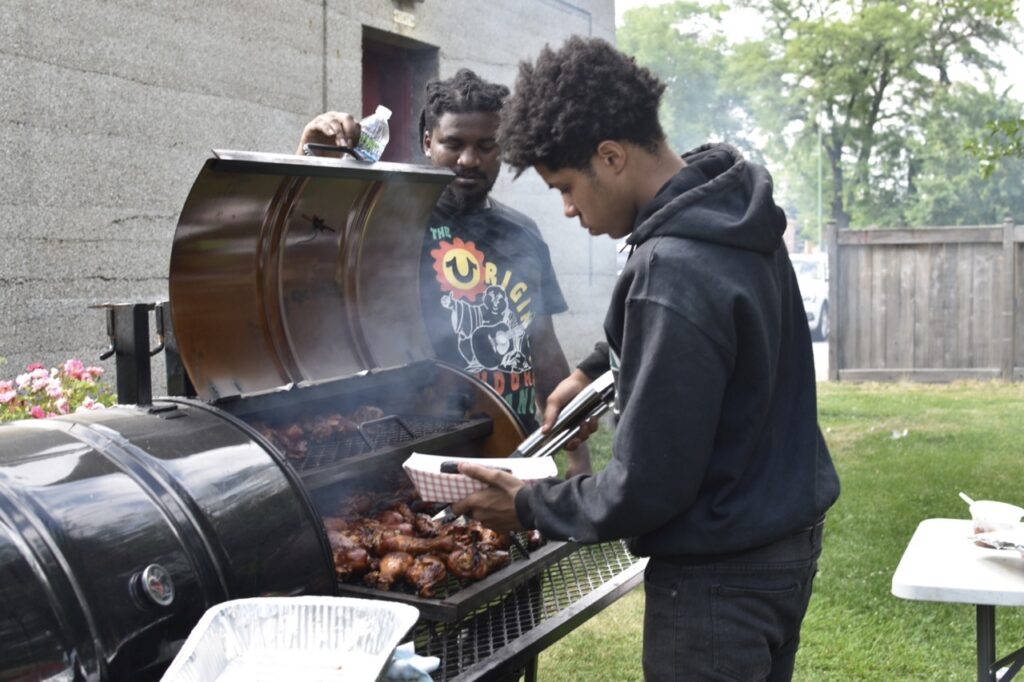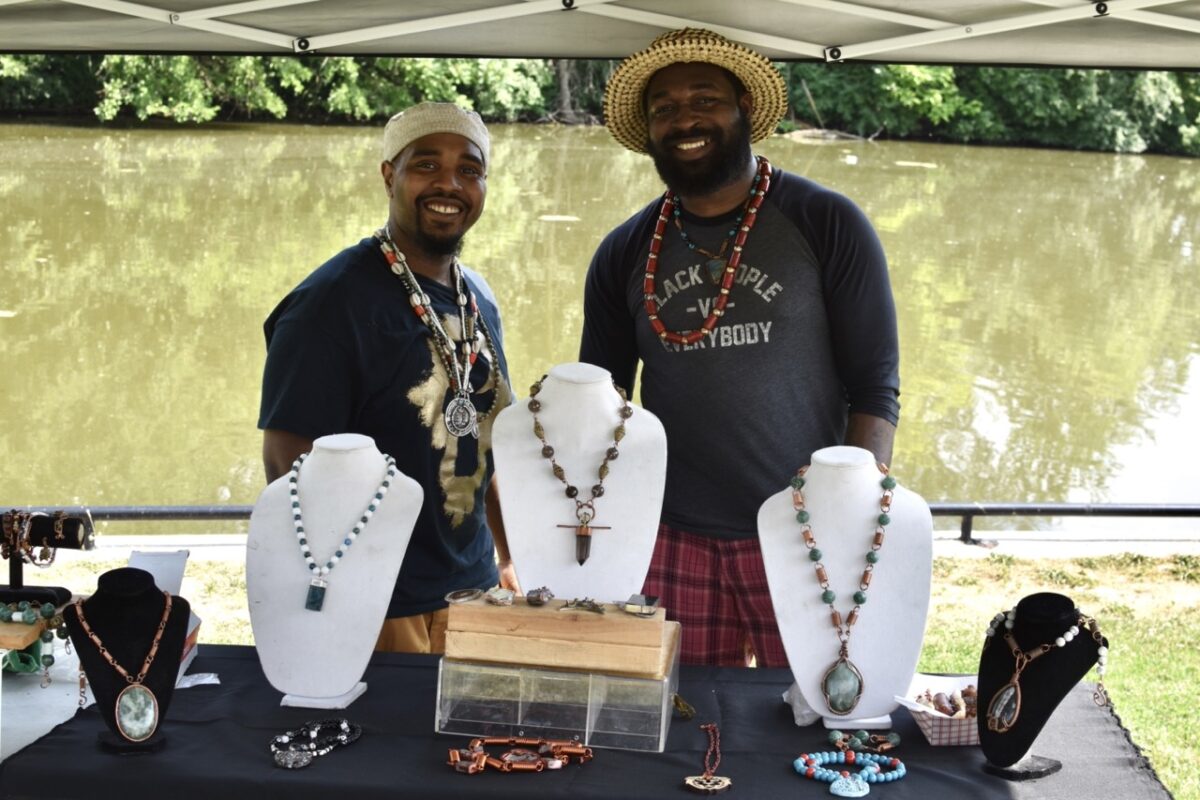Growing up in Englewood, Ifatola Tifase didn’t know what Juneteenth was. She never saw the holiday celebrated in her community. Like many African American people, she didn’t feel connected to her enslaved ancestors or her roots in Africa. The extent of her knowledge was knowing that her family originated in the South, before moving to Chicago.
As an adult, Tifase set out to learn about herself and her roots. That journey led to her founding Tola’s Creations Botanica Annual Juneteenth Celebration, which celebrated its fifth year on June 15. Tifase also owns Tola’s Creations Inc. at 2943 W. 71st St., a wellness center that hosts yoga workshops, sells spiritual supplies such as candles, incense, and herbs, and works towards the mission of “Bringing African Culture to You.”
“I simply wanted to celebrate our freedom,” Tifase told the Weekly. “We weren’t free on July 4 and that is a big holiday…Once I learned of Juneteenth, the meaning behind it, I wanted to celebrate the meaning of our people.”
This year’s celebration was hosted outside the field house at Marquette Park. The event focused on promoting mental health and wellness, featuring yoga sessions, a keynote address by Yoruban spiritual leader Adekunle Akangbei, and a variety of vendors including the City of Chicago Office of Emergency Management and Communications (OEMC), the Cook County Sheriff’s “Tails of Redemption” program, and wellness experts.

Juneteenth celebrates the end of chattel slavery in the former Confederate States. On June 19, 1865, Union troops led by Major General Gordan Grander enforced the Emancipation Proclamation in Galveston, Texas. The Proclamation was initially signed by Abraham Lincoln on September 22, 1862 and took effect on January 1, 1863, legally freeing enslaved people in the Confederacy. Those enslaved in Union states were not freed until the 13th Amendment to the Constitution was ratified in December 1865.
Last September, Tifase took her family to Ashton Villa in Galveston, the site of Confederate headquarters in Texas where it was long believed that Gordon announced the Emancipation Proclamation. “I felt obligated to at least learn more about the holiday I so diligently celebrate every year and encourage other people to do so,” Tifase said. “It felt empowering.”
Nearly sixty years ago, Marquette Park may have seemed an unlikely place for an event celebrating the struggle for freedom. In 1966, Dr. Martin Luther King Jr. visited Marquette Park to galvanize supporters around housing justice. A mob of 700 white protesters met King as he exited his car. As he began to march towards a real estate office on 63rd Street, a rock struck King in the head. As he kneeled from the impact, others surrounded him to protect him. By the time the march neared its destination, a riot broke out.
“I’ve been in many demonstrations all across the South, but I can say that I have never seen—even in Mississippi and Alabama—mobs as hostile and as hate-filled as I’ve seen here in Chicago,” King told reporters afterward, the Tribune reported in a 2016 story for the fiftieth anniversary of the confrontation. King’s Chicago movement included moving to North Lawndale, where he described the housing conditions as “wall-to-wall rats and roaches.”
Nowadays, the scene at Marquette Park is much different. Today stands the Martin Luther King Jr. Living Memorial at 6743 S. Kedzie Ave to mark fifty years since King’s march for housing justice, sponsored by the Inner City Muslim Action Network (IMAN) and commissioned by the Chicago Public Art Group. Three brick pillars depict King and community members who were with him that day from the Jewish Council on Urban Affairs, Operation PUSH, and other religious leaders. The word “home” is written in several languages on the memorial.
Marquette Park on June 15 was like many summer Chicago Saturdays. Predominantly white golfers teed off as mostly Black and Mexican basketball players shot hoops. Nestled behind the field house, which doubles as the Marquette Park Cultural Center, dozens of attendees perused vendors’ stalls and listened to the historical discourse.

“I think of [Juneteenth] as something that brings more people together. Like the 4th of July, but for Black people. I know that it’s a deeper meaning than that, but I think that’s the way a lot of people see it, including myself,” said Deja H., a resident of Bronzville. “If I’m being honest, we should know the history behind it. It’s still nice that it gathers the community. It’s a good start.”
Like Tifase, Hayes did not become fully aware of the holiday until later in life. Despite growing up in Texas, the Marquette Park event was her first time celebrating. She attended after seeing the event promoted online hoping to build her connection to Chicago’s Black community and become more active. “I figured, since I don’t know much, this would be a good time to learn,” she said.
Tifase said she ultimately hopes that her events encourage Black people to learn more about their connection to Africa.
“The branches of this tree are learning the importance of the roots, and so going back [to Africa], embracing that culture, learning our roots,” she said. “I’m the first in my family to branch out. They thought I was crazy, at first, to travel over there by myself and connect with my people, with family, re-engage with family. Now they understand the importance of what I do.”
Michael Liptrot is a staff reporter at the Weekly and the Hyde Park Herald.

